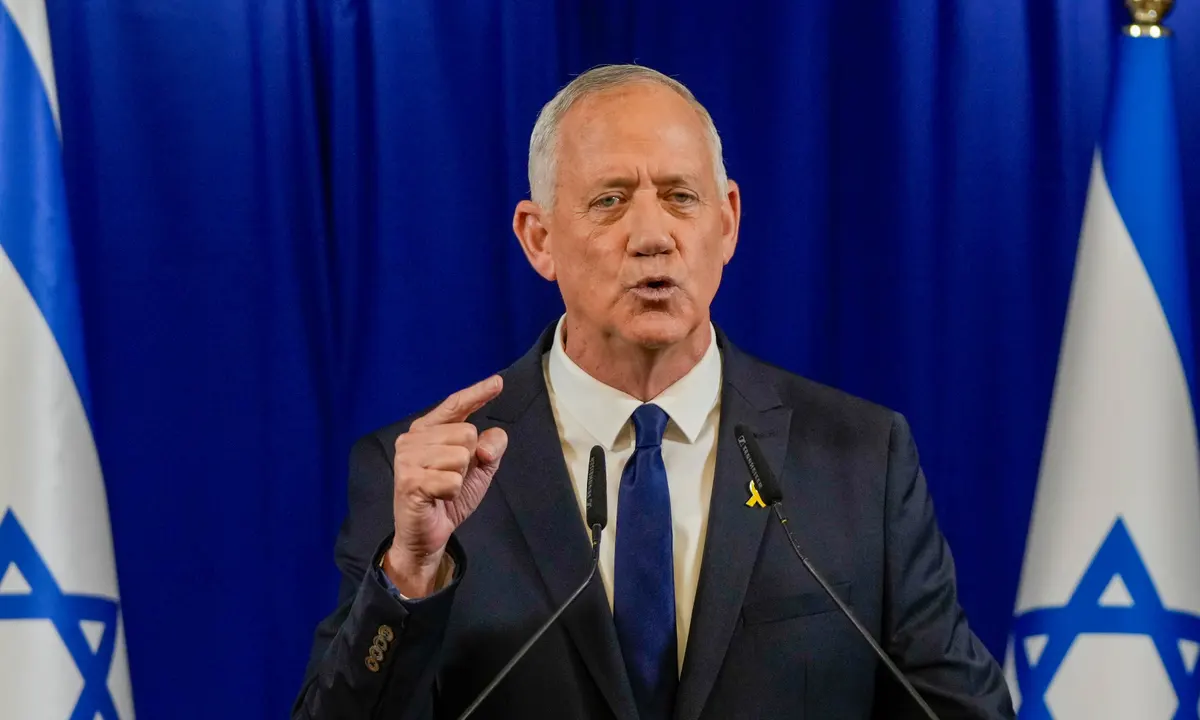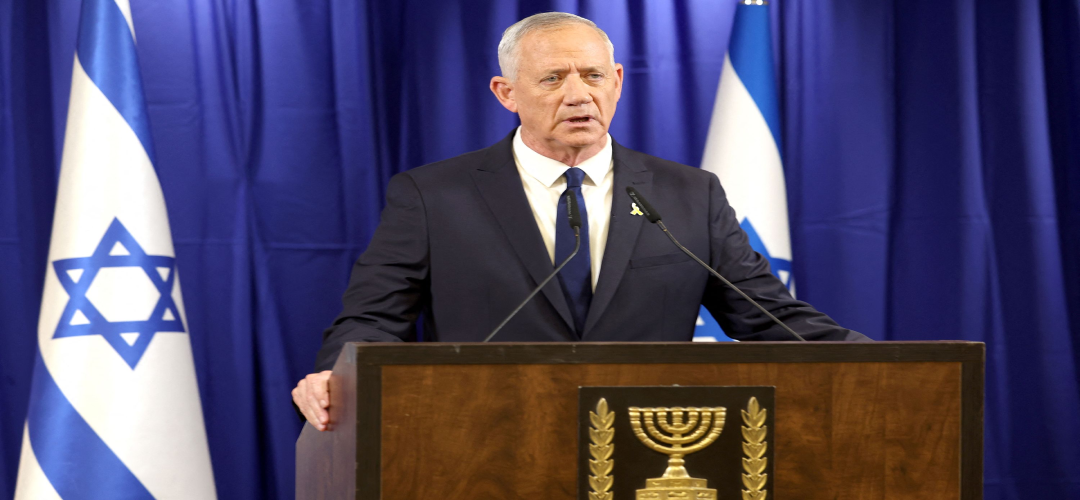Fractures in Israel’s political hierarchy became evident when Benny Gantz, a popular figure, left in a huff.
Even as Israeli Prime Minister Benjamin Netanyahu revelled in the dramatic rescue of four hostages, his war cabinet suffered a devastating blow. Benny Gantz, perhaps the most popular and highly regarded member of the war cabinet, resigned on June 9, eight months after its inception. As quoted by the BBC, in his resignation speech, Gantz said, “Unfortunately, Mr Netanyahu is preventing us from approaching true victory, which is the justification for the painful, ongoing crisis,” while calling on Mr Netanyahu to set a date for fresh elections.
Gantz was not the only member who effectuated his demission. He was quickly followed by Gadi Eisenkot, the most moderate of the 5-member cabinet. “Netanyahu is preventing us from advancing toward true victory”, Gantz mentioned in his resignation as Netanyahu failed to adopt his six-point plan. Like pillars of a bridge, the two centrists had engaged in the ‘political combine’ after the October 7th Hamas terror attacks, and now that bridge is collapsing.
Background
It would be recollected that last month, Mr Gantz had listed six strategic goals for Israel, including bringing closure to the Hamas rule in the Gaza Strip and replacing it with a multinational civilian administration. He had set a deadline of 8 June for implementing this strategy. The prime minister had dismissed the suggestion as “washed-up words” that would mean “defeat for Israel”. Mr Gantz also accused the Prime Minister of not having a strong plan on how to end Hamas’ rule apart from the constant bombings and failed to endorse Gantz’s plan to expand military service to all Israelis.
This upheaval in the government is not very surprising as it comes in the wake of recent allegations by the defence minister Yoav Gallant against Netanyahu. Gallant accused the latter of ushering Israel into a military occupation of Gaza and marring the country in “blood and many victims, with no aim.”.
Mr Gallant was seen as the saner element in the cabinet who stood up to the “autocracy “of the Prime Minister. Similarly, Benny Gantz, the opposition leader and former chief of staff of the Israel Defence Forces (IDF), added a moderate element to this cabinet, vastly dominated by Netanyahu and his allies from the far-right. His presence in the cabinet was instrumental in preventing it from being played into the hands of Netanyahu’s far-right allies. It kept the ‘extremists out of the war cabinet’.
Just a year before the Hamas attacks, Netanyahu came into power for his sixth term as the premier. His new far-right government was deemed to be the most hardline and religious in Israel’s history. It is composed of ultranationalist, orthodox elements along with his Lukid party. Netanyahu came into the spotlight for his coalition with Ben Gvir, who had ties with Kach, now a terrorist organisation in Israel. This coalition has been opposed to Palestinian statehood since the day they took oath. The controversial actions of Netanyahu’s government to rein in the judiciary had led to a yearlong convulsion that tore the country apart. This gave Hamas an ideal opportunity to launch its October 7th assault on a nation gripped by political turmoil.

Analysis
Joy is being expressed in some political quarters within and outside Israel that these resignations may lead to the collapse of the Netanyahu government, which may be a bit premature. With Mr Netanyahu still holding a comfortable majority with 64 seats in the 120-seat Knesset, politically, he remains in the safe zone.
Of course, the fractures in the war cabinet have been cruelly exposed and laid bare the deep political divisions within the country, which in the first place contributed to Hamas opting for the Oct 7th attack. Mr Netanyahu, already a global pariah, appears even more isolated at home.
The resignation also did not augur well for the American efforts to convince both parties to stick to the ceasefire proposal, approved at the UNSC. The U.S. has put increasing pressure on Israel to accept the three-phase “comprehensive new proposal” to put an end to the war. The first phase consists of a hostage-prisoner swap, followed by the cessation of hostilities in Gaza. The third phase includes a multi-year reconstruction plan for the Strip.
If these are held now, Mr Gantz stands a good chance to win elections. The popularity of Gantz has increased while that of Netanyahu has significantly decreased. The lack of progress in bringing back the remaining 120 hostages has built up the frustration of the people. They demand an independent commission to inquire about the failure to prevent the October 7 attacks. There have been increasing anti-government protests against the prime minister’s cabinet to get back the hostages.
Netanyahu now faces a dilemma. If he stops the war, the coalition may collapse as the ultra-right members see military action as the only road to end Hamas rule. Continued escalation will upset the United States, which has been very supportive so far despite the hits taken by President Biden on his approval ratings in an election year. An election loss may see Mr Netanyahu facing a prison term for his existing conviction.
Assessment
- It seems Mr Netanyahu has very few options. He could break with the far right and accept offers from Benny Gantz and Yair Lapid, the former prime minister who leads the largest opposition party, to support his minority government. This support is contingent on accepting a ceasefire and a hostage-release deal, which could stabilise the political situation.
- Alternatively, he could dissolve the Knesset and call for new elections. This move would be a significant gamble, as recent polls indicate that three-quarters of Israelis believe he should step down immediately or after the war.
- Realistically, the only sane way out is stopping the war, getting home the remaining surviving hostages and facing a fresh election, even if it means some jail time. Clearly, the physical destruction of Hamas cannot be achieved in its entirety, even if the war drags on for another year. Militant cadres effortlessly merge with the populace and can never be entirely liquidated.




